Dogs and Teaching Children Responsibility
You can just hear it now, your son or daughter trying every trick in the book to get you to bring home a puppy. In nearly all cases, one of the arguments they try is "I promise I'll take care of it!" In fact, many parents add a puppy to the family for the express reason of teaching their children some responsibility. Does this really work?
Is your child ready?
The problem with using a dog to teach a child responsibility is that the dog becomes the guinea pig on whom your child may or may not successfully learn the lesson. Depending on the age and maturity level of your child, you must accept the fact that you will be at least somewhat involved in the dog's care. If for no other reason than that you may be the one who is home with the dog while your child attends school, sporting events, band practice, and social activities, you will at the very least be involved in letting the dog in and out of the house to take care of business several times a day.
If your child is a reasonably responsible teenager, he or she ought to be able to walk the dog, clean up the messes in the yard and in the house, keep up with feeding and watering, and provide play time with the animal. But what about taking the dog to the veterinarian? Is your child able to safely transport the animal to the vet's office, control the dog during the examination, and pay for the necessary treatments and medications? If not, don't trick yourself into believing you will not have any responsibility for your child's pet.
Very young children will be capable of much less of the care involved in raising a pet. They will likely be able to feed the dog, but may not understand the importance of providing a healthy diet and controlling portions to prevent obesity. Younger children may spill most of the water out of the dog dish on the way from the sink to the floor. Young kids should not walk large dogs, as the dog may take the child for a short flight (usually ending in a crash landing). And I don't know of many youngsters who will be willing to clean up dog doo, or the occasional bladder accident on the carpet.
Children of any age may not be capable of obedience training and socializing a dog. Teaching a dog manners requires lots of patience and the ability to tell if the dog is intentionally misbehaving, or is just learning at his or her own pace.
Choose the right dog
Once you have decided you're willing to take on the responsibilities your child is not able to do, the next step is in determining the right dog for your child. Very small breeds are often delicate, meaning they will not stand up well against the rough handling of a toddler. Toy dogs can easily be injured by simply jumping down from a child's lap or out of a child's arms. In addition, they are the least likely dogs to enjoy a small child's exploring (i.e. poking) fingers and curiosity about what happens when fur or a tail is pulled...hard.
Conversely, very large dogs may create a danger to the child. Without meaning to be rambunctious or malicious, a large dog can easily knock over a little kid by simply walking through a crowded room or wagging his or her tail exuberantly.
Breeds of a medium size are probably best for families with children, as evidenced by the overwhelming perennial popularity of such breeds as the Labrador Retriever, Golden Retriever, Bulldog, Boxer, and German Shepherd. All have ranked in the top ten breeds registered with the American Kennel Club in recent years. In fact, Labs have held the number one spot for the last 20 years. Mixed breeds are also a good choice and may be purchased much less expensively than a purebred. You can read more about the best dogs for children on our guide.
In addition to the size of the dog, you must also consider temperament. Some breeds have a reputation for being bullies while others are known for their gentleness. Keep in mind that within each breed, individual dogs may not always fit the profile. If you are buying a puppy, ask the breeder for recommendations as to which puppies might best fit your family's lifestyle. The breeder should have spent enough time with the puppies to be able to recommend one or two that appear to have the disposition to be around children your child's age.
If you are adopting from a shelter, you may be getting a fully mature dog who already has a known personality. The shelter personnel should be able to tell you whether or not the dog has reacted well to children in the past. You should also be able to take a "test drive" with the dog in one of the visitation rooms or outdoor pens so you can see how the dog reacts to your children.
If there is any question in your mind as to how the dog will behave, introduce your children to the animal through a fence or gate before entering the space where the dog is. Have the child put his or her hand flat against the chain links to allow the dog to sniff and lick before entering the cage. If the dog shows any signs of aggression (raised hackles, growling, baring teeth), this is probably not the best dog for your family, regardless of how cute your 3-year old thinks the dog is.
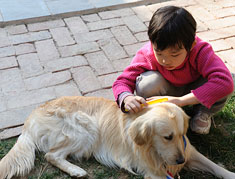
Caring for your new dog
Introduce your child to the jobs for which he will be responsible gradually. At first, especially with a young child, you might want to have the child assume feeding chores. For very young children, it may be that they fill the dishes and you set them down for the dog until you see how the dog acts. Many dogs jump and go wild when food is presented, which may scare or injure your child. Other dogs are food-possessive and will not want anyone's hands near their dishes. You might have to put the dog in another room until the dishes are filled and set out for him.
As the child gets older and more experienced, he or she may be able to begin training, socializing, walking, and grooming the dog, although parental guidance may still be needed. You will likely have to stay involved in veterinary care unless your children have reached driving age. Make sure the dog is properly crated or belted into the car to prevent driving distractions, particularly if your son or daughter has just recently earned a driving license.
Good luck with that last task - cleaning up waste. If you've found a method that works well to get your child involved in yard clean-up, please comment below.
Doggies Den: Latest Articles
 Homemade Thanksgiving Treats for Your Dog
Homemade Thanksgiving Treats for Your Dog
NUTRITION We all want to include our dogs in our holiday celebrations, but hopefully, you're aware that sharing table scraps with your dog isn't always the best idea.
 Keeping Your Dog Safe during the Summer Months
Keeping Your Dog Safe during the Summer Months
HEALTH Summer is coming on fast, so it’s time to plan how you will keep your dog safe and healthy through the lazy, carefree, warm days.
 Vaccination Time Again-Keeping Your Puppy Healthy
Vaccination Time Again-Keeping Your Puppy Healthy
DOG HEALTH So you have your new puppy picked out. There are quite a few shots, treatments and examinations that will keep the newest member of your family healthy.
 Canine Thanksgiving Feast
Canine Thanksgiving Feast
NUTRITION With the wide variety of food at Thanksgiving dinner, chances are you'll want to give your dog something special, too. If you're contemplating what to feed your dog for the holiday, here is a guide to a great Canine Thanksgiving Feast.
 Dog Walking Tips Every Owner Should Know
Dog Walking Tips Every Owner Should Know
DOG FUN Walking your dog is not only crucial to keeping him healthy and happy, it strengthens the bond between your canine friend and his caregiver. There are a lot of obstacles out there. Don’t forget these simple tips to keep your walk fun and safe in the outside world.
 The Benefits of Physiotherapy for your Dog
The Benefits of Physiotherapy for your Dog
HEALTH The same techniques that physiotherapists use to treat a variety of injuries and conditions in humans have been adapted to suit animals with great success. Family pets, show dogs, and working dogs can all benefit greatly from physiotherapy. Dogs whose activities involve a lot of agility are especially susceptible to the types of problems that physiotherapy can address.
 The Decision- Adding a Dog to Your Family
The Decision- Adding a Dog to Your Family
FIRST TIME OWNERSBringing a dog into your family is a decision where many people don’t realize it’s magnitude until after they have the dog. There are a number of things that you need to research before you decide to purchase a dog, and it starts right in your own home.
 Bringing Your Dog Into Your New Baby's Life
Bringing Your Dog Into Your New Baby's Life
HEALTH Many believe that a dog and a new baby cannot happily coexist, so therefore the dog has to go. This is not necessarily the case. A new baby does not mean you have to abandon your dog.

Doggies Den:
Most Popular Articles

Dog Pregnancy Symptoms
HEALTHIf you suspect your dog might be pregnant, check out part one in this series on pregnant dogs, where we cover pregnant dog symptoms.
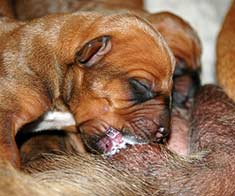
Dog Birth
HEALTHIn the third article of our dog pregnancy series, we look at the wonderful, but messy, process of bringing newborn puppies into the world.

Indoor Dog Potties
DOG PRODUCTSIt's been a long day at work. You were so busy, you didn't even take time to eat a sandwich, let alone run home to let your dog out. You're on your way home, knowing the poor dog is crossing his or her legs by now, when your car breaks down, delaying you even further. Can't somebody make this easier?
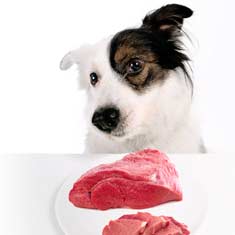
Your Dog’s Digestive System
PHYSIOLOGYEver wonder why your dog eats so fast? Or why he eats gross things? Or why he gets sick to his stomach? Or why his waste stinks so bad? Some of these things are normal, some are not.

Canine Respiratory System
BREATHINGThe basic function of your dog's respiratory system is to bring oxygen in to and remove carbon dioxide from the body. Knowing the symptoms of respiratory diseases can help you help your stay healthy.
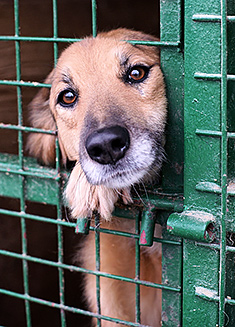
Shelter Dog Adoption Tips for Success
ADOPTION Are you intimidated by the prospect of "rescuing" a dog from a shelter? One reason that you may be wary of adopting a dog from a shelter is not knowing how to choose. Adopting a dog from a shelter can be a rewarding process, if you're prepared to do a reasonable amount of research.

Canine Urinary Tract Infections
SYMPTOMS AND TREATMENTDoes your dog seem to be having trouble relieving his or her bladder? Learn how to recognize the signs of urinary tract infections and how to treat them before they spread.

What to do for Dog Diarrhea
SYMPTOMS AND REMEDIESIf you have dogs in your house for any length of time, you have likely experienced at least one bout of dog diarrhea. Beyond the pain in the tuckus involved in cleaning up the mess, you should know what causes diarrhea, and when it's important to see the vet.
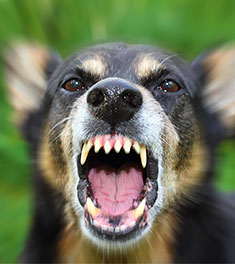
What to do for a Dog Bite
DOG BEHAVIOR Getting bitten by a dog can be scary, and you may be tempted to run around in circles for a while, trying to figure out what to do. Here's our guide to help you manage the situation.

Top Ten Tips for Living with a Senior Dog
DOG HEALTH Bringing home a new puppy is so exciting, but it doesn’t take all that long for your exuberant puppy to grow into a senior dog who may have special needs. Here are the doggies.com top ten tips for taking care of your companion who has been with you through so much.
